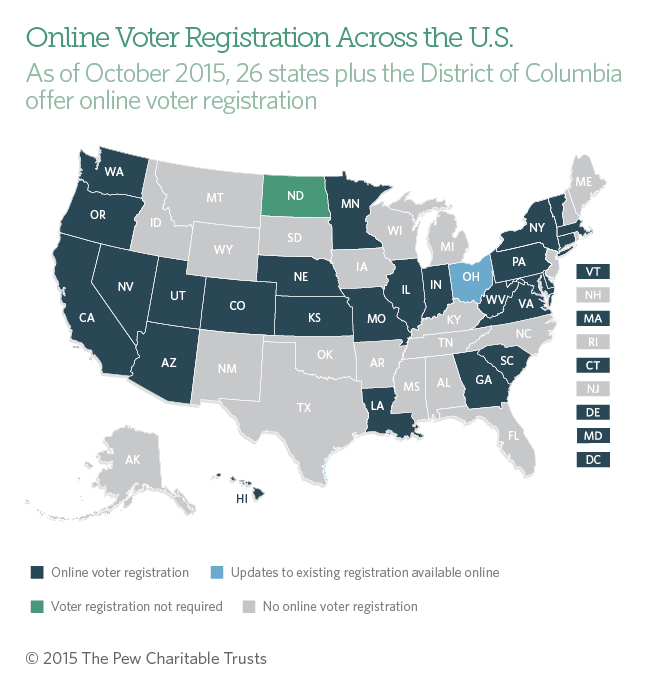Do They Know Where You Live? Americans' Mobility Remains a Challenge for Voter Lists
September 29, 2015, Election Initiatives
Voting label from the State of California
New data from the US Census Bureau show that residential mobility continues to be an important concern in maintaining voter lists. According to the data, 35.7 million people, or 11.5 percent of Americans, relocated within the United States during 2014; of those, 16.7 million moved to a different county in the same or another state. Many of them, however, do not realize that they need to update their registration records to reflect their new addresses.
A 2014 poll conducted by Public Opinion Strategies and the Mellman Group on behalf of Pew showed that 40 percent of California voters did not know that the Postal Service does not automatically update their registration when they move. When registration records are not updated, voter rolls become increasingly inaccurate, which can lead to information being mailed to old addresses and prevent voters from casting ballots in the correct precincts on Election Day.
The Electronic Registration Information Center (ERIC) helps states keep their voter lists more complete and up-to-date by providing information on voters who have moved. Since its formation in 2012, ERIC has identified more than 2.7 million Americans who had moved from the address in their voter file.
Follow PEW's Election Data on Twitter using #electiondata and get the latest data dispatches, research, and news by subscribing today.
More States Upgrade Voter Registration Systems
West Virginia and Vermont recently began offering online voter registration, an upgrade that is trending across the country. They join 24 other states and the District of Columbia in allowing citizens to register to vote and update their registrations entirely online. These systems are convenient for voters, efficient and cost-effective for election officials, and yield more accurate, up-to-date voter rolls than handwritten paper forms do.
Vermont’s online registration system requires users to provide their driver’s license or state identification number and a portion of their Social Security number. This step verifies the applicant’s identity and allows the system to use the voter’s electronic signature from the motor vehicle database. Eligible voters without a state driver’s license or ID can still complete an application online, then print, sign, and mail the paper form to the elections office. West Virginia’s system uses similar security and convenience measures.
Vermont launched its portal as part of a broad new online election administration system that permits users — including voters who reside overseas or serve in the military — to track their registration status and request and track absentee ballots.
Follow us on Twitter using #electiondata and get the latest data dispatches, research, and news by subscribing today.
More Articles
- Jo Freeman Writes: The 2024 Libertarian National Convention as Seen Through Feminist Eyes
- Hope: A Research-based Explainer by Naseem S. Miller, The Journalist's Resource
- "The 2022 midterm election returns could ... be marred by a rush to judgment by political leaders or news outlets"* Harvard Kennedy School Shorenstein Center on Media, Politics and Public Policy
- Voting Rights: Assistant Attorney General Kristen Clarke Testifies Before the Senate Judiciary Committee Hearing; “One of the most monumental laws in the entire history of American freedom”
- Journalist's Resource: Religious Exemptions and Required Vaccines; Examining the Research
- Jo Freeman Reviews Electing Madam Vice President by Nichola D. Gutgold
- US Presidential Debates: Three Studies Journalists Should Know About (And The Public!)
- Jo Freeman Writes: The Political Parentage of Kamala Harris
- Jo Freeman Writes: Kamala Harris on the Democratic Ticket
- New York Historical Society: Did “I Approve This Message” Live Up to its Promise? An Exhibition About the Emotional Impact of Political Advertising








